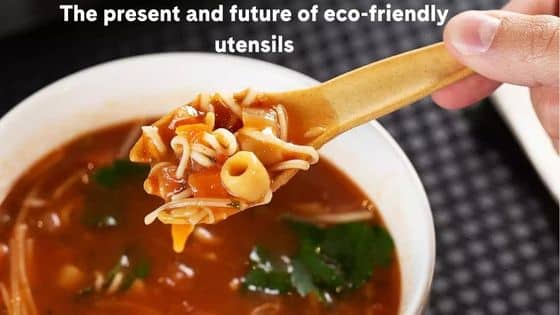The present and future of eco-friendly utensils

As Hong Kong exits the quarantine period of this arduous COVID era, the city’s dwellers are rejoicing and embracing their newfound freedoms. Multitudes of Hong Kongers are rushing to create plans, indulge in revenge traveling, and generally feel relieved with the knowledge that this period of uncertainty is over.
Along with the joyous celebrations is a crucial course of introspection and reflection of what we as individuals, and as a collective city, have done during the pandemic. One of those topics which are becoming top of mind is the environmental impact of the pandemic: from disposable masks used, to testing kits administered, to all the food delivery and takeout packaging that we have even grown so accustomed to. With that in mind, let us take some time to reflect on our pandemic food delivery habit, and specifically on the waste created by food delivery packaging.
In the past two years under the pandemic, Hong Kongers’ usage of food delivery services and single-use plastics grew sharply. According to Statista, more than 50% of the city’s citizens started using food delivery services more often compared to the 2019 pre-pandemic period. During that same period, local environmental non-profit Greener Action also published a report that estimated Hong Kong’s usage of single-use plastics to exceed 100 million pieces per week. When faced with this reality, there is no doubt that something needs to change. But what, and how?
While there is no one-size-fits-all solution, one growing trend that has piqued interest as of late is edible utensils. Edible and biodegradable utensils provide an interesting opportunity within a post-pandemic world that has settled into the ‘New Normal’ yet are more keenly aware of our impact on the natural environment than ever before. While edible utensils are still a new and experimental product, check out how they are already helping us reconsider our habits, and their potential to drive even more change!
- Edible utensils are made with earth-friendly ingredients.
While various brands of edible utensils may make their products out of different ingredients, the basic principle remains the same: these utensils can be safely consumed as food! Some brands are opting for riffs off traditional food items—see Pasta Straws—while other innovators are looking to create moulded forks, knives, and spoons with a unique blend of natural ingredients, such as incrEDIBLE Eats which uses mix of wheat, oats, corn, chickpeas, and brown rice. One thing is for sure: there is no limit to the creativity in the space!
- Edible utensils are prompting a re-examination of our relationship with food.
As edible utensils come to play with dish concepts, creative minds in the industry are putting the two together and considering edible utensils as an extension of the dish itself! Companies like Edibles By Jack are rethinking how hors d’oeuvres can be eaten, edible utensil and all. No longer are utensils and food separate entities; they can now be considered as an extension of the meal itself, which provides endless opportunities for further innovation.
- They’re fun, exciting, and can reinvigorate how we eat!
On top of innovation and sustainability, edible utensils can be fun too! Edible utensil companies are now exploring new flavour profiles and combinations for these sustainable food vessels, such as parmesan basil, white chocolate, and toasted coconut. Not only will it give more space for chefs and restaurateurs the world over to become more creative with recipes, but it will also allow us more interesting options to pair with our food deliveries. Definitely a space worth watching out for, and one that will bring a zing to our culinary experiences!
